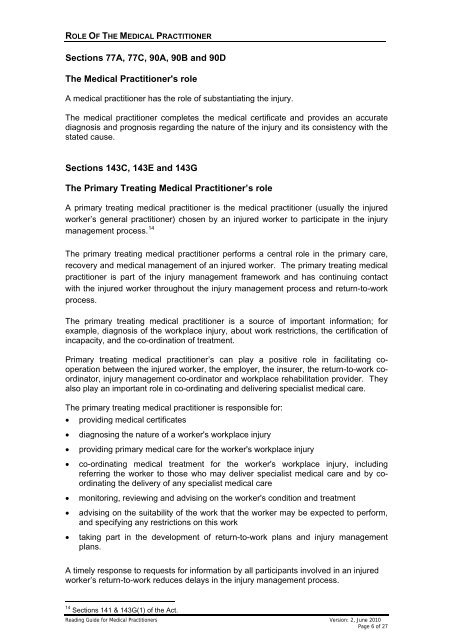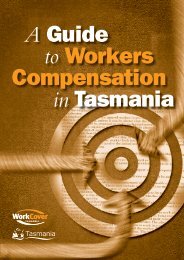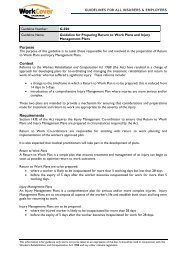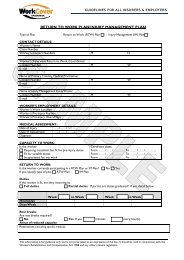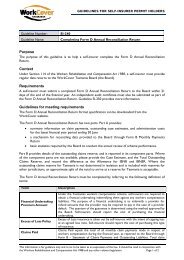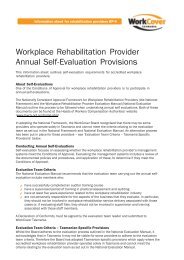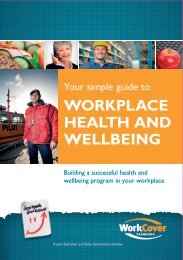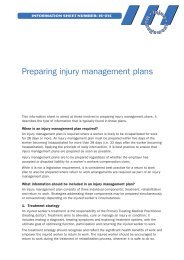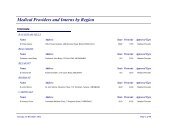Reading Guide for Medical Practitioners - WorkCover Tasmania
Reading Guide for Medical Practitioners - WorkCover Tasmania
Reading Guide for Medical Practitioners - WorkCover Tasmania
Create successful ePaper yourself
Turn your PDF publications into a flip-book with our unique Google optimized e-Paper software.
ROLE OF THE MEDICAL PRACTITIONERSections 77A, 77C, 90A, 90B and 90DThe <strong>Medical</strong> Practitioner's roleA medical practitioner has the role of substantiating the injury.The medical practitioner completes the medical certificate and provides an accuratediagnosis and prognosis regarding the nature of the injury and its consistency with thestated cause.Sections 143C, 143E and 143GThe Primary Treating <strong>Medical</strong> Practitioner’s roleA primary treating medical practitioner is the medical practitioner (usually the injuredworker’s general practitioner) chosen by an injured worker to participate in the injurymanagement process. 14The primary treating medical practitioner per<strong>for</strong>ms a central role in the primary care,recovery and medical management of an injured worker. The primary treating medicalpractitioner is part of the injury management framework and has continuing contactwith the injured worker throughout the injury management process and return-to-workprocess.The primary treating medical practitioner is a source of important in<strong>for</strong>mation; <strong>for</strong>example, diagnosis of the workplace injury, about work restrictions, the certification ofincapacity, and the co-ordination of treatment.Primary treating medical practitioner’s can play a positive role in facilitating cooperationbetween the injured worker, the employer, the insurer, the return-to-work coordinator,injury management co-ordinator and workplace rehabilitation provider. Theyalso play an important role in co-ordinating and delivering specialist medical care.The primary treating medical practitioner is responsible <strong>for</strong>:• providing medical certificates• diagnosing the nature of a worker's workplace injury• providing primary medical care <strong>for</strong> the worker's workplace injury• co-ordinating medical treatment <strong>for</strong> the worker's workplace injury, includingreferring the worker to those who may deliver specialist medical care and by coordinatingthe delivery of any specialist medical care• monitoring, reviewing and advising on the worker's condition and treatment• advising on the suitability of the work that the worker may be expected to per<strong>for</strong>m,and specifying any restrictions on this work• taking part in the development of return-to-work plans and injury managementplans.A timely response to requests <strong>for</strong> in<strong>for</strong>mation by all participants involved in an injuredworker’s return-to-work reduces delays in the injury management process.14 Sections 141 & 143G(1) of the Act.<strong>Reading</strong> <strong>Guide</strong> <strong>for</strong> <strong>Medical</strong> <strong>Practitioners</strong> Version: 2, June 2010Page 6 of 27


